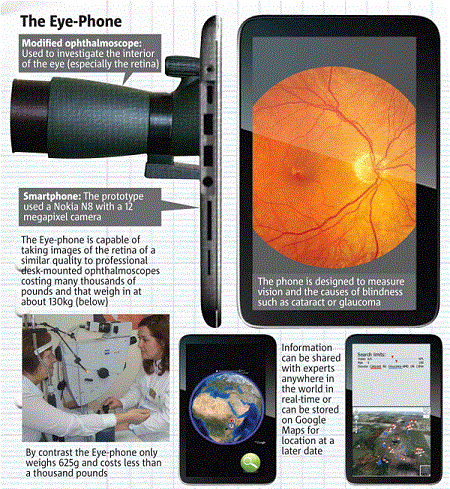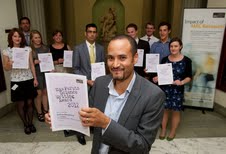Everything is hazy; I can’t even see my glasses. I keep my eyes closed; it doesn’t seem to make much difference opening them. My hand feels clumsily around the bedside table, knocking my mobile phone to the floor, and eventually I come across my glasses. On they go, and I can see again. Those brief few seconds as I awake each morning serve as a continual reminder of how much I value my sight.
Many people fear losing their sight more than any other sense. I am fortunate to have perfect vision when wearing corrective glasses or contact lenses, and privileged to be in a profession (ophthalmology) where centuries of research and practice have brought us to a point where much of blindness is curable or preventable. There is no feeling like it: when the eye patch comes off someone who hasn’t seen for years, witnessing their sheer wonder as they take in their surroundings and their anticipation to see faces that have become voices and places that have become memories.
Incredibly, despite 80% of blindness being curable or preventable, the majority of blind people with treatable eye conditions live in developing countries and have no access to suitable healthcare. Africa has the greatest disparity in numbers needing treatment and specialists available to provide it. In the UK we have 3,600 ophthalmologists compared to only 86 in Kenya where I will be moving to later this year.
There are many factors that can lead to blindness, and many complexities that lead to a society unable to deal with the burden that comes with a disability. Although each individual goes blind very much alone, there are shared stories and features, the understanding of which can enable prevention or access to curative treatment. Some of the major questions include asking how many people are blind? Who are they? Where do they live? Why are they blind?
Gathering this type of information is known as epidemiological research, a method of describing the characteristics of a population. This information is then used to inform policy-makers and health workers to benefit individuals on a large scale.
Performing such a study can be a logistical nightmare, as well as extremely time consuming and expensive. My study involves the retracing and examination of 5,000 people across a district in Kenya known as Nakuru. Taking what is effectively a fully staffed eye hospital (a team of 15 people), fully equipped (with more than £100,000 worth of heavy and fragile equipment) to remote villages, many of which have no road access or electricity supply, is extremely challenging yet absolutely vital if provision to prevent needless blindness is to be put in place.
The back of the eye shown on the smartphone screen and smartphone with eyepiece attachment (Copyright: Andrew Bastawrous)

As I pondered and planned for the challenges that lay ahead, I’ve had the continual thought that there must be an easier way to gather this information, a way that is less expensive and resource hungry, and therefore could be used on a much wider scale. Then it dawned on me … I use my smartphone for everything nowadays, from checking train times, navigating in the car, taking and sharing photos, not to mention using it as a phone and speaking to people.
This has led me to develop a set of gadgets and applications making it possible to use a modified smartphone (I call it the ‘Eye Phone’) to measure someone’s vision; check their refractive error (glasses prescription); take photos of the back of the eye for diseases such as diabetic retinopathy, macula degeneration and glaucoma; and check for the presence of a cataract. All the data is then stored on the phone and can be shared with specialists anywhere in the world to provide expert diagnosis and treatment plans in even the most remote locations. Individuals are locatable on an interactive Google Map, and can be retraced and contacted to arrange treatment or follow up.
It is important to check the new device works and doesn’t miss people who need help.
To see how accurate the new device is, I will test the phone on the same 5,000 individuals undergoing the detailed examinations that use the gold-standard, state-of-the-art hospital equipment. We will then be able to compare the two methods and see how many of the study population we would have correctly picked up as having sight loss (as well as the reasons why) and if we would have missed anyone.
At one-fiftieth of the price and with only one non-specialist needed to perform the test, the examiner can go to the patient rather than the patient waiting for someone who might never come. It could be that those in remote and resource-poor places, silently losing their sight, could be a text message away from help.

Andrew Bastawrous is an MRC Fellow at the International Centre for Eye Health based at the London School of Hygiene and Tropical Medicine. His winning entry was also published in Metro and on MetroCosm.




